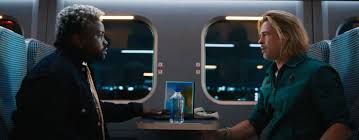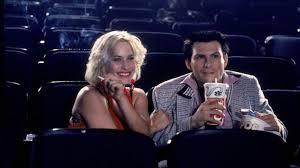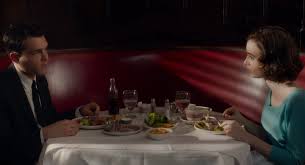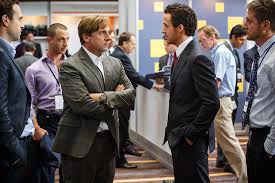

POP ART, WHERE WE FIND THE POP CULTURE IN ART AND THE ART IN POP CULTURE.
TRAINSUBSTANTIATION: Join me and screenwriter Jordan Trippeer as we discuss two movies that take place on trains, Bullet Train and TransSiberian.
“You’re a diesel.” Oh, for the days when people traveled by train. The scenery, the comfort, the luxury, the smuggling, the murders, the crashes.…Sounds like it’s time for Episode 96 of Pop Art, where we find the pop culture in art and the art in pop culture. It’s the podcast where my guest chooses a movie from popular culture, and I’ll select a film from the more art/classic/indie side of cinema with a connection to it. For this episode, I am happy to welcome back as my guest, screenwriter Jordan Trippeer, who has chosen as her film the action packed Brad Pitt led comedy Bullet Train, while I have chosen the more indie Woody Harrelson/Emily Mortimer crime drama, TransSiberian, both films about criminal goings on a train.
And in this episode we answer such questions as: What’s so great about train movies anyway? What are the different moral universes the two movies take place in? Why was Bullet Train accused of whitewashing? Why did a sign in TransSiberian read All Abroad? What is the character of Hello Kitty? What are the McGuffin in both films? Why was Bullet Train filmed on studio sound stages? What are some differences between the book and screenplay of Bullet Train?
Check out Jordan’s IMDB page https://www.imdb.com/name/nm4930599/?ref_=nv_sr_srsg_0 and check out her films, as well as be on the look out for her upcoming projects.
Jordan has been a previous guest on my podcast. For episode 20, we discussed two films revolving around demons, Constantine and The Wailing. Check it out.
Check out my blog at https://howardcasner.wordpress.com/
My books, More Rantings and Ravings of a Screenplay Reader, The Starving Artists and Other Stories and The Five Corporations and One True Religion can be found at https://www.amazon.com/s?k=howard+casner&ref=nb_sb_noss
Meanwhile, like, follow or comment on my podcast. I’d love to know what you think. And check out the other episodes. On ITUNES https://podcasts.apple.com/us/podcast/pop-art/id1511098925, Anchor: https://anchor.fm/howard-casner, and Spotify https://open.spotify.com/show/5jX4noVGArDJdmcFtmrQcG, Sticher: https://www.stitcher.com/podcast/pop-art, Google Podcasts: https://podcasts.google.com/…, Breaker: https://www.breaker.audio/pop-art, Pocketcasts: https://pca.st/vfjqj6j6, Radiopublic: https://radiopublic.com/pop-art-GExxNb and other streaming sites
Check out my Script Consultation Services at http://ow.ly/HPxKE. I offer several types of service. Testimonials can be found at the blog entry.
Finally, I have published a collection of three of my plays, 3 Plays, https://www.amazon.com/dp/B08478DBXF as well as two collections of short stories, The Starving Artists and other stories, https://www.amazon.com/dp/B07FS91CKJ and The Five Corporations and the One True Church and other stories, https://www.amazon.com/dp/B07KY5Z3CF.



